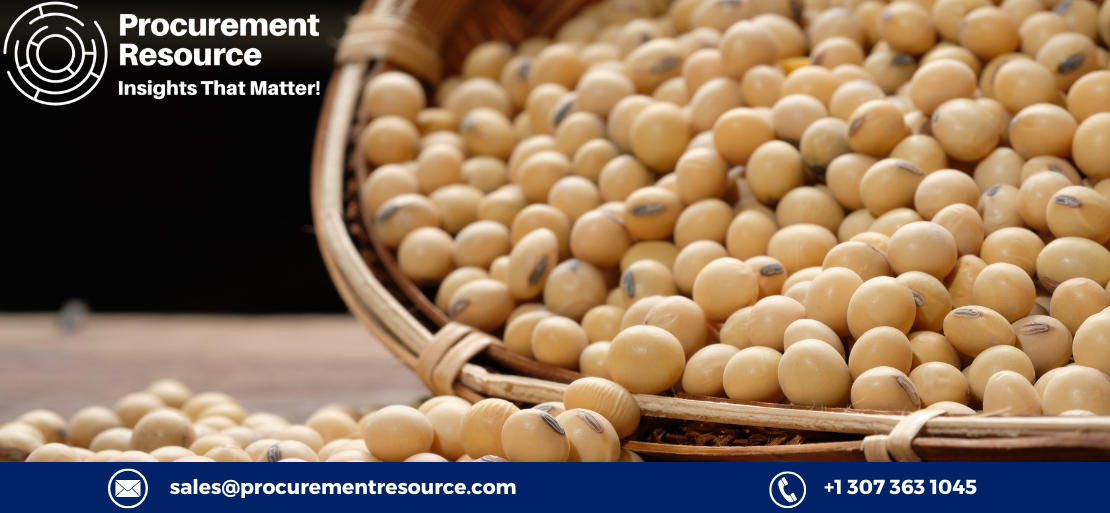Corn and Soybean Prices are Traded Higher at the Chicago Board of Trade (CBOT)

According to Reuters, the prices of wheat, corn, and soybeans all increased at the Chicago Board of Trade (CBOT).
Wheat prices increased by 2 to 9 cents a bushel. On the back of unstable anticipation of wheat prices that dry weather projections could further harm the crop in the US Plains, wheat prices were headed higher by KC hard red winter wheat contracts.
In an international tender to purchase 120,000 tonnes of milling wheat, it is thought that Jordan's official grain buyer made no purchases.
Request Access For Regular Price Update of Corn
CBOT The price of a bushel of May soft red winter wheat ended the overnight trading session up 2 cents at USD 7.02-3/4. Hard red winter wheat for May delivery in KC was recently 9 cents higher at USD 8.38-3/4 a bushel, while spring wheat for May delivery was up 8-1/4 cents at USD 8.59-3/4 a bushel.
The cost of corn increased by 3 to 5 cents per bushel. Moreover, on robust export demand for US supplies, corn prices witnessed northward wind. Corn is supported by worries over corn seeding delays in the US Midwest.
According to the US Department of Agriculture, private exporters reported selling 136,000 tonnes of corn to China for delivery in the marketing year 2022–2023.
Benchmark during overnight trade, the CBOT May corn futures contract crossed above its 20-day moving average for the first time since February 22. Corn for May delivery on the CBOT recently traded at USD 6.37-1/4, up 4-1/4 cents.
Prices for soybeans increased by 5 to 10 cents per bushel. Soybeans are being supported by speculative purchases made by commodity investment funds after the most active contract hit a three-month low.
The benchmark CBOT May soybean futures are being closely watched by traders to see if they can overcome resistance at their 10-day moving average. Overnight, the contract moved above its 100-day moving average. CBOT May soybeans recently traded at USD 14.95-3/4 per bushel, up 9-3/4 cents.
What Triggered March's Start After February's Wild Collapse in Corn and Soybean Prices?
Another positive closing price was observed for corn and soybeans. Since the CME's drop in February, the market has gained momentum.
The funds substantially sold off their long positions at the end of February. They came back as purchasers at the turn of the calendar.
The supply and demand situation remained the same in March, as Grete observes. The rumour that China was buying corn, soybeans, and wheat contributed to the market turmoil. Yet, the USDA's daily and weekly export records that were made public this week never corroborated those purchases.
Read More About Corn Production Cost Reports - REQUEST FREE SAMPLE COPY IN PDF
At this moment, they are only rumours, as per Sam Hudson (Cornbell Marketing), and inspections aren't a lot more attractive when you consider the overall export demand ahead of the USDA crop report due out next week, which shows that maize shipments are still 13% behind schedule.
According to Hudson, the rate of Brazil's harvest could affect the price in the meantime. Grete also notes that the headlines about Argentina's declining crop seem to have worn down the markets to some extent.
Evidently, the demand side is a problem for corn and wheat, but soybeans are performing a little better. A significant amount of the Safrinha crop, or second crop, was planted later and beyond the optimal window. The yields won't necessarily be lower, though.
According to Grete, the markets wouldn't react in the upcoming week if there were a weather problem with Brazil's second harvest. He predicts that if there is a weather problem in Brazil, it will have an effect on the markets one to two months from now.
As per Procurement Resource, Wheat, corn, and soybean prices, all rose on Tuesday at the Chicago Board of Trade, according to Reuters (CBOT). Prices for a bushel of wheat climbed by 2 to 9 cents. Wheat prices were driven higher by KC hard red winter wheat contracts because of concerns that dry weather forecasts could further hurt the harvest in the US Plains. It is believed that Jordan's official grain buyer made no acquisitions in an international tender to buy 120,000 tonnes of milling wheat.



